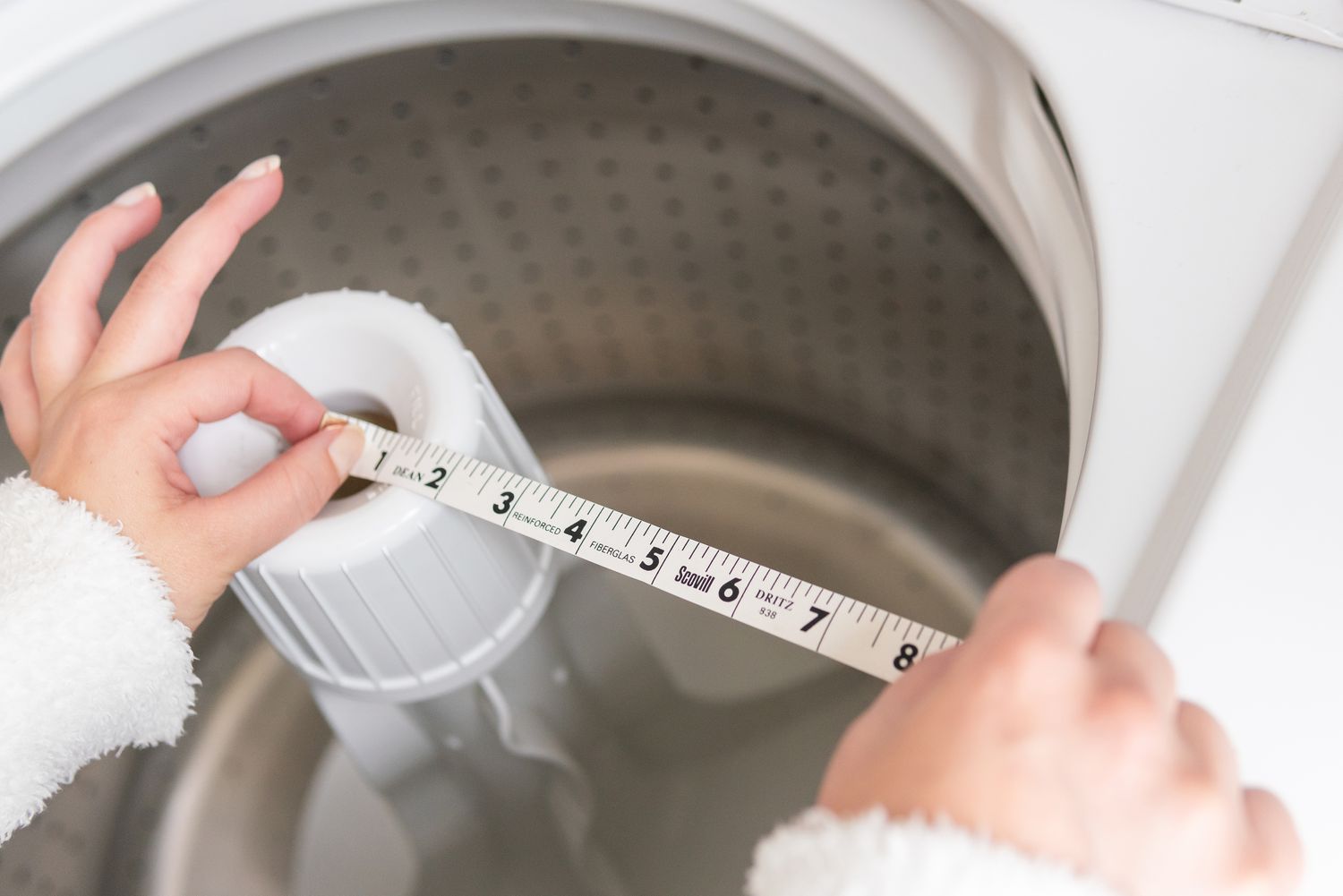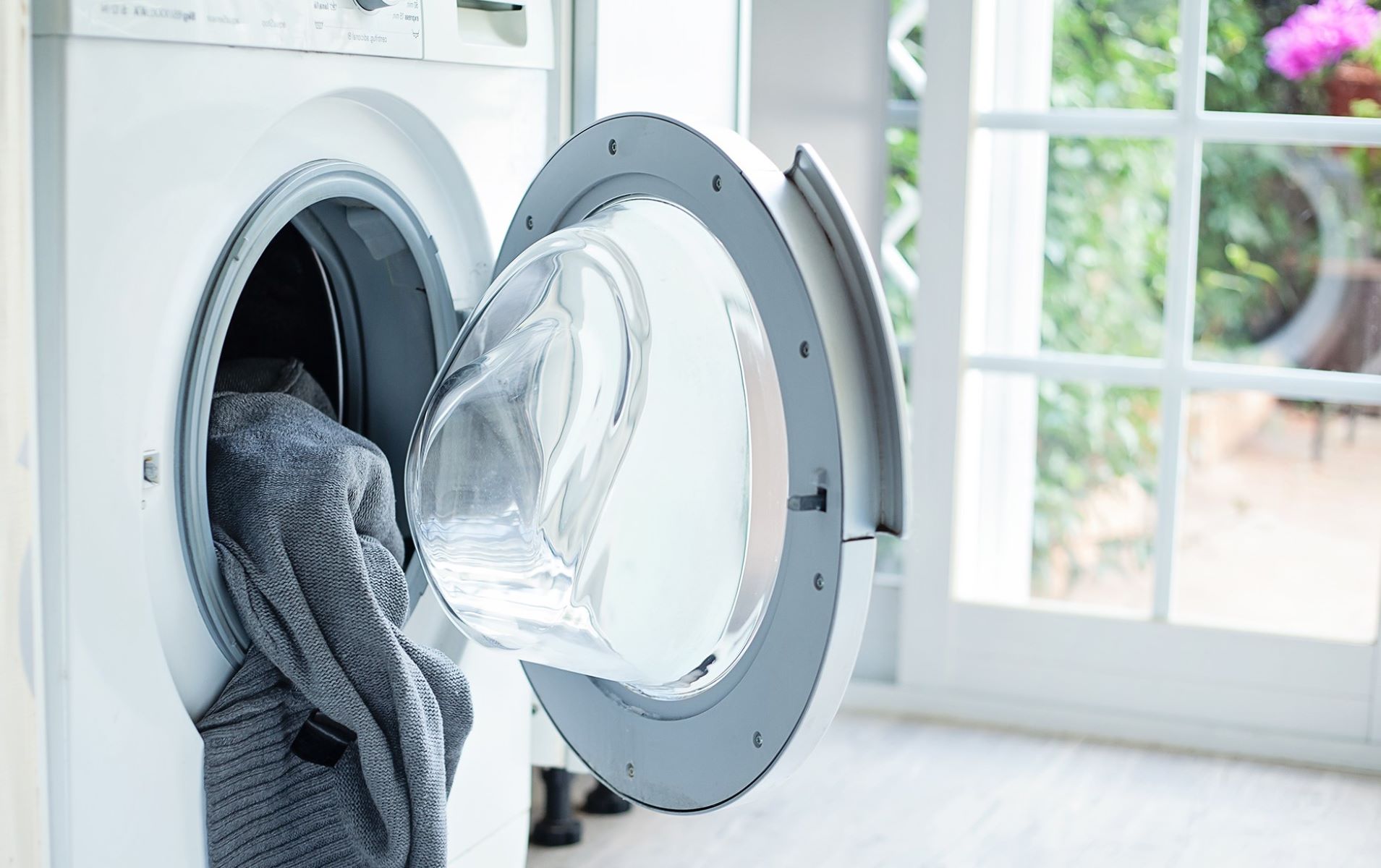Home>Home Appliances>Laundry Appliances>What Is Delicate Setting On A Washing Machine


Laundry Appliances
What Is Delicate Setting On A Washing Machine
Published: February 21, 2024
Learn how to use the delicate setting on a washing machine for your laundry appliances. Discover the benefits and best practices for washing delicate items.
(Many of the links in this article redirect to a specific reviewed product. Your purchase of these products through affiliate links helps to generate commission for Storables.com, at no extra cost. Learn more)
Understanding the Delicate Cycle
The delicate cycle, often denoted by a symbol of a flower or a twisted hanger on washing machines, is designed to handle fragile and sensitive fabrics with the utmost care. This specialized setting employs a gentle washing motion, lower spin speeds, and shorter cycle duration to minimize the risk of damaging delicate garments. It is particularly suitable for items such as lingerie, lace, silk, wool, and other fine fabrics that require a more delicate touch during the laundering process.
The delicate cycle is characterized by a slower agitation speed, which reduces the risk of stretching, tearing, or pilling delicate fabrics. Additionally, the reduced spin speed helps prevent excessive wrinkling and tangling of delicate items, preserving their shape and integrity. The shorter cycle duration minimizes the exposure of delicate fabrics to water and detergent, preventing potential damage from prolonged soaking or harsh washing.
When the delicate cycle is selected, the washing machine adjusts the water temperature to ensure that it aligns with the specific requirements of delicate fabrics. This is crucial, as certain delicate materials, such as silk and wool, are sensitive to high temperatures and may shrink or become misshapen if exposed to hot water.
In essence, the delicate cycle is tailored to cater to the unique needs of delicate garments, providing a gentle yet effective washing method that safeguards the quality and longevity of these special items. Understanding the intricacies of this cycle empowers users to make informed decisions when laundering delicate fabrics, ensuring that they receive the care and attention they deserve.
Key Takeaways:
- The delicate setting on a washing machine provides gentle treatment, preserves fabric integrity, and minimizes wear and tear for delicate garments, ensuring their longevity and quality.
- When using the delicate setting, remember to sort and separate delicate items, use mesh laundry bags, opt for mild detergents, and handle garments with care to protect delicate fabrics from damage and preserve their beauty.
Read more: What Does Delicate Mean On A Washer
Benefits of Using the Delicate Setting
The delicate setting on a washing machine offers a myriad of benefits, making it an indispensable feature for handling delicate fabrics and ensuring their longevity. Understanding and harnessing these advantages can significantly enhance the care and maintenance of delicate garments, ultimately preserving their quality and extending their lifespan.
1. Gentle Treatment
The primary benefit of using the delicate setting is the gentle treatment it provides to fragile fabrics. Delicate items, such as silk, lace, and wool, require a more tender approach during the laundering process to prevent damage. The delicate setting employs a slower agitation speed and reduced spin cycles, minimizing the risk of stretching, tearing, or pilling delicate fabrics. This gentle treatment ensures that delicate garments retain their original texture, shape, and appearance, avoiding the common pitfalls associated with standard washing cycles.
2. Preservation of Fabric Integrity
By utilizing the delicate setting, users can effectively preserve the integrity of delicate fabrics. The reduced spin speed minimizes excessive wrinkling and tangling, safeguarding the delicate fibers from unnecessary strain and stress. This preservation of fabric integrity is particularly crucial for intricate and embellished garments, as it helps maintain the structural integrity of delicate details, such as beading, embroidery, and delicate trims, which are prone to damage in conventional washing cycles.
3. Minimized Wear and Tear
Another notable benefit of the delicate setting is its ability to minimize wear and tear on delicate garments. Standard washing cycles, characterized by vigorous agitation and high-speed spins, can accelerate the deterioration of delicate fabrics over time. In contrast, the delicate setting's gentle washing motion and reduced mechanical action reduce the risk of fabric abrasion and fiber breakage, prolonging the lifespan of delicate items and preserving their aesthetic appeal.
Read more: What Washer Setting For Blankets
4. Protection Against Shrinkage
The delicate setting plays a pivotal role in protecting delicate fabrics from shrinkage, a common concern when laundering items such as wool and silk. By adjusting the water temperature to suit the specific requirements of delicate fabrics, the delicate setting mitigates the risk of shrinkage caused by exposure to high temperatures. This proactive measure ensures that delicate garments maintain their original size and fit, eliminating the potential disappointment of finding shrunken items after washing.
5. Versatility for Diverse Fabrics
Beyond its primary focus on delicate materials, the delicate setting offers versatility for a wide range of fabrics, including items labeled as "hand wash only" or "dry clean only." This flexibility allows users to launder various delicate and specialty fabrics with confidence, knowing that the washing machine's delicate setting can cater to their specific care requirements without compromising their quality.
In essence, the benefits of using the delicate setting extend far beyond mere convenience, encompassing the fundamental aspects of fabric care, preservation, and protection. By leveraging the gentle yet effective nature of the delicate setting, individuals can uphold the pristine condition of delicate garments, ensuring that they remain a cherished part of their wardrobe for years to come.
Tips for Washing Delicate Items
When it comes to washing delicate items, employing the delicate setting on a washing machine is just the beginning. To ensure the optimal care and maintenance of delicate fabrics, it is essential to adhere to specific tips and best practices that can enhance the laundering process and preserve the integrity of these special garments.
-
Sorting and Separation: Prior to washing delicate items, it is crucial to separate them from heavier, coarser fabrics to prevent potential damage from friction and abrasion. Sorting delicate garments into distinct loads based on color, fabric type, and care instructions can prevent color bleeding and ensure that each item receives the appropriate treatment during the washing process.
-
Use of Mesh Laundry Bags: Utilizing mesh laundry bags provides an additional layer of protection for delicate items. Placing delicate garments inside these breathable, protective bags shields them from excessive agitation and friction, reducing the risk of snags, tears, or stretching during the washing cycle. This simple yet effective measure can safeguard delicate fabrics and delicate details, such as lace and embroidery, from potential damage.
-
Mild Detergents: Opt for gentle, mild detergents specifically formulated for delicate fabrics. These detergents are designed to cleanse without harsh chemicals that can compromise the delicate fibers of fabrics such as silk, wool, and lace. Additionally, using a minimal amount of detergent helps prevent residue buildup and ensures thorough yet gentle cleansing of delicate garments.
-
Cold Water Washing: When washing delicate items, selecting a cold water temperature helps preserve the structural integrity and color vibrancy of delicate fabrics. Cold water minimizes the risk of shrinkage and color fading, making it an ideal choice for laundering delicate garments. The delicate setting on a washing machine typically adjusts the water temperature accordingly, aligning with the specific requirements of delicate fabrics.
-
Gentle Cycle and Reduced Spin Speed: Always opt for the delicate cycle on the washing machine to provide the gentlest treatment for delicate items. This cycle employs a slower agitation speed and reduced spin cycles, minimizing the risk of damage to delicate fabrics. The reduced mechanical action helps maintain the original texture and shape of delicate garments, ensuring that they emerge from the washing cycle unscathed.
-
Air Drying or Low Heat: After washing delicate items, opt for air drying or using a low heat setting in the dryer to prevent excessive heat exposure. Delicate fabrics such as silk and wool are sensitive to high temperatures, which can lead to shrinkage and damage. Air drying delicate garments on a flat surface or using a low heat setting in the dryer helps maintain their quality and shape without subjecting them to unnecessary heat stress.
By incorporating these tips into the laundering routine, individuals can elevate the care and maintenance of delicate items, ensuring that they receive the attention and protection they deserve. These simple yet impactful measures can make a significant difference in preserving the beauty and longevity of delicate fabrics, allowing them to be enjoyed for years to come.
Precautions When Using the Delicate Setting
When utilizing the delicate setting on a washing machine, it is essential to exercise caution and adhere to specific precautions to ensure the optimal care and protection of delicate garments. By being mindful of these precautions, individuals can mitigate potential risks and safeguard delicate fabrics from damage, preserving their quality and integrity for the long term.
-
Proper Garment Assessment: Before initiating the delicate cycle, it is imperative to assess the condition of delicate garments thoroughly. Check for any loose threads, embellishments, or delicate trims that may be susceptible to damage during the washing process. Repairing any loose elements or securing delicate details can prevent them from becoming entangled or damaged in the washing machine.
-
Avoid Overloading: While it may be tempting to maximize the washing load, overloading the machine when using the delicate setting can compromise the effectiveness of the cycle and increase the risk of fabric damage. It is advisable to adhere to the recommended load capacity specified by the washing machine manufacturer to ensure that delicate items have ample space to move freely and receive the gentle treatment they require.
-
Mindful Selection of Accessories: When washing delicate items, it is crucial to select the appropriate accessories, such as mesh laundry bags, to provide an additional layer of protection. However, it is essential to choose the right size of mesh bag to accommodate the delicate garments without overcrowding. Overfilling the mesh bag can diminish its protective capabilities and expose delicate items to potential damage.
-
Careful Handling During Transfer: When transferring delicate items into the washing machine and removing them post-cycle, gentle handling is paramount. Avoid tugging or pulling delicate fabrics, as this can lead to stretching, distortion, or damage to the garments. Handling delicate items with care during the loading and unloading process helps maintain their original shape and condition.
-
Inspection for Residue: After the delicate cycle is complete, it is advisable to inspect delicate garments for any detergent residue or lingering debris. Residue left on delicate fabrics can lead to discoloration, stiffness, or skin irritation upon wear. Thoroughly rinsing delicate items or opting for an additional rinse cycle can help eliminate any residual detergent, ensuring that garments are clean and free from potential irritants.
-
Optimal Drying Conditions: Once the delicate cycle concludes, it is crucial to employ suitable drying methods to preserve the quality of delicate garments. Air drying delicate items on a flat surface or using a low heat setting in the dryer can prevent excessive heat exposure, which may compromise the delicate fibers and structural integrity of the fabrics. Additionally, ensuring that delicate items are dried away from direct sunlight can prevent color fading and potential damage.
By observing these precautions when using the delicate setting, individuals can elevate the care and maintenance of delicate garments, minimizing the risk of damage and maximizing their longevity. These proactive measures empower users to embrace the delicate setting with confidence, knowing that their cherished delicate items are receiving the meticulous care and protection they deserve.
Now that you know how to use the delicate setting, consider if cold wash cycles could benefit your laundry routine. Learn when using lower temperatures can preserve fabric quality and save energy. Don't miss out on understanding these helpful laundry tips.
Frequently Asked Questions about What Is Delicate Setting On A Washing Machine
Was this page helpful?
At Storables.com, we guarantee accurate and reliable information. Our content, validated by Expert Board Contributors, is crafted following stringent Editorial Policies. We're committed to providing you with well-researched, expert-backed insights for all your informational needs.















0 thoughts on “What Is Delicate Setting On A Washing Machine”